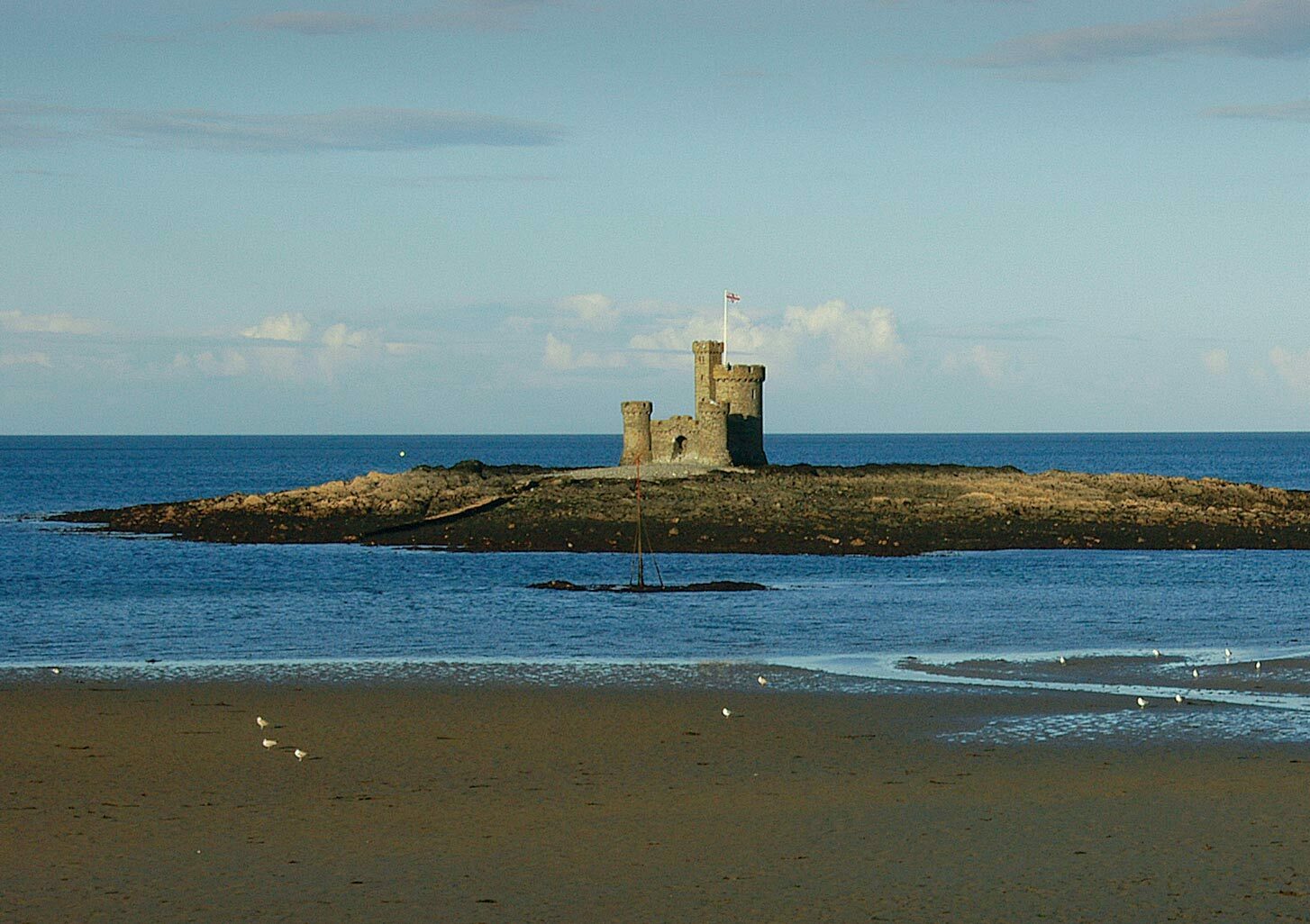About
Site Directory
Copyright © 2025 www.isleofman.com
All Right Reserved
powered by 
Copyright © 2025 www.isleofman.com
All Right Reserved
powered by 


St Mary's Isle is more commonly known as Conister Rock or the Tower of Refuge
The traveller arriving by sea at Douglas cannot help but notice, depending on the state of the tide, either a fortress-like building rising directly out of the sea, or, if it is low water, a long menacing reef of rock on which this structure is built. Despite its appearance, this tower had no military or defensive function. Rather, its purpose was the humanitarian one of providing shelter for the crews of the many vessels which were wrecked on the reef.
It also served to indicate the presence of the dangerous rocks. The building is called the Tower of Refuge and the reef on which it stands is known as St Mary's Isle, or Conister Rock. The name Conister derives from the Manx Gaelic, Kione y Sker, meaning the end of the reef.
Probably the best known wreck on Conister Rock was that of the St. George in 1830. The Douglas lifeboat rescued all 22 persons on board. Sir William Hillary, who lived on Douglas Head at Fort Anne, now demolished, was the founder of the Royal National Lifeboat Institution. Hillary was a member of the Douglas lifeboat crew and took part in the service to the St George. On that occasion he was washed overboard and injured.
In the following year Hillary had the idea of building a refuge on Conister Rock. This consists of three stout towers linked together to form a triangular shaped structure. It was designed by John Welch and was erected in 1832. The cost was £255 and £181 was raised by public subscriptions. Hillary made up the difference himself.
The tower is owned by the RNLI and their flag flies over it. During the summer months the tower is decoratively illuminated and is a prominent feature of Douglas Bay. Sir William Hillary is buried in St George's churchyard in Douglas and a commemorative service is held annually in January. The Douglas lifeboat house near the breakwater makes an interesting visit and there another William Hillary may be seen - the Douglas lifeboat named after the Institute's founder.